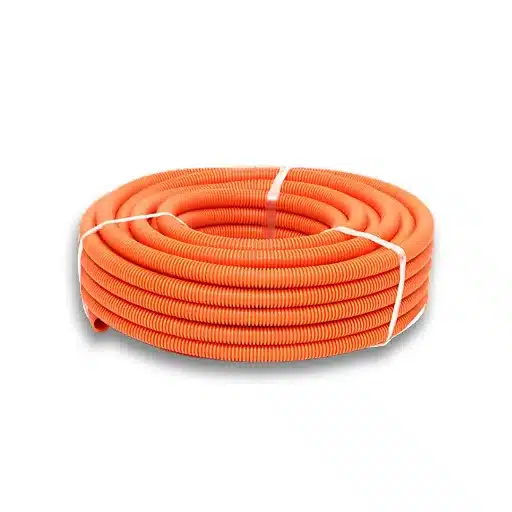With the infrastructure and construction sectors continuing to witness exponential growth, the demand for more advanced, economical, and durable materials is well on its way. HDPE double wall corrugated pipes vie for prominence among the list of essential building materials, earning their reputation for strength, flexibility, and durability. Pricing for these pipes, on the other hand, remains a highly specialized subject affected by forces such as raw material prices, manufacturing processes, and supply chain peculiarities, not to forget demand variances in different regions. This discourse attempts to comprehensively analyze the price of HDPE double wall corrugated pipes, thereby enabling stakeholders to derive practical insights into pricing trends, major cost drivers, market situations, etc. Whether you work as a supplier, a contractor, or an observer, this in-depth exploration will impart clarity on how market forces are driving the pricing of these essential goods.
Introduction to HDPE Double-Wall Corrugated Pipes
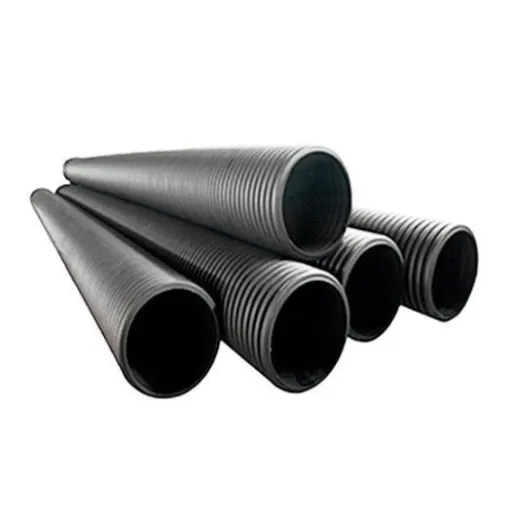
Definition and Composition
They are special piping systems meant for highly efficient drainage and sewerage applications. These pipes are basically double layers of extrusion: an outer corrugated wall for structural strength and inner smooth walls for good fluid flow. The dual-wall corrugated HDPE pipes can withstand the pressure of underground applications while being flexible enough for use in them.
The composition of the HDPE double-wall corrugated pipes is chiefly high-density polyethylene, which is a thermoplastic polymer most certainly considered the best in terms of durability, corrosion resistance, and lightness. It is made for long life and can endure a multitude of environmental forces, such as temperature variation, abrasive materials, and continuous contact with moisture. Furthermore, they are UV-stabilized, which means some degree of sun exposure during installation will not affect their performance.
Given these traits, HDPE double-wall corrugated pipes find their applications in all sorts of infrastructure projects for stormwater management, highway drainage, and agricultural irrigation. Their lightweight design permits them to be carried and installed with ease, thereby creating a downward pull on overall costs. Yet, they have been engineered for high performance for several decades. This stratification into engineered reliability at less cost makes for the modern engineering and construction blueprints.
Applications in Various Industries
- Stormwater Management: Advanced rainwater drainage systems are used in stormwater systems to help prevent flooding and enhance water quality. These systems are designed to accommodate an immense volume of flowing water, thus safeguarding the environmental regulations.
- Road Drainage Systems: Drainage efficiency is a necessity for highway safety, as it concerns the integrity of the structural formation of the road. Therefore, it is understood that road drainage systems of highway type, if properly engineered, will stop water build-up that may cause hydroplaning or damage to the roads. Studies show that such systems increase the life of highways by almost 30 percent by controlling water-induced erosion.
- Agricultural Irrigation: Drainage pipes, being durable, are an essential element of modern agricultural irrigation networks. With controlled water distribution, the farmer gets the best crop yield while maintaining water resources.
- Wastewater Disposal for Industrial Purposes: Such systems provide industrial wastewater treatment and disposal. Designs ensure safe separation of contaminants from discharge water in accordance with both national and international environmental standards. For the heavy industries of petroleum or chemical processing, those systems remove about 70% contaminants from the wastewater.
- Mining Works: Drainage systems are very important in the field of mining, having a crucial role in handling below-the-surface water and in preventing mines from getting flooded. These drainage systems further aid in stabilizing tailings dams, wherein water runoff is channeled efficiently. According to studies, good water management in mining operations can reduce operational downtime by 15%, thereby increasing productivity.
Advantages of Using HDPE Double-Wall Corrugated Pipes
High Durability and Longevity
HDPE double wall corrugated pipes resist corrosion, abrasion, and chemical attacks, thus maintaining a life span of over 50 years under normal operating conditions. They thus fit perfectly in aggressive environments in different industries, including drainage and sewage systems.
Light in Weight and Easy Installation
Weight-wise, these pipes are much lighter compared to other traditional ones like concrete and metals, which reduces their transportation and handling costs. A 10 m long HDPE pipe weighs generally 70% less than the weight of a concrete pipe of the equivalent dimension, hence regulating installation rather than making it more labor-intensive.
Better Hydraulic Performance
With smooth inner walls, the HDPE double-wall corrugated pipes have lower friction coefficients, allowing flow rates to be enhanced by as much as 30 percent over traditional materials. This, in turn, enhances the overall hydraulic performance of systems carrying water and wastewater, especially over longer distances.
Eco-Friendly and Recyclable
Made from high-density polyethylene, these pipes are environmentally friendly. Their recyclability at the end of their service life ensures less waste, thus promoting circular economy practices in the construction industry.
High Resistive Capacity Against External Loads
Corrugations sitting on their outer surface give them impervious resistance to external forces and heavy loads, and they are therefore used in drainage under heavy applications for roads and railways. Laboratory tests have demonstrated that it can withstand loads up to SN8 (8 kN/m2) according to ISO standards.
Current Market Trends for HDPE Double-Wall Corrugated Pipes
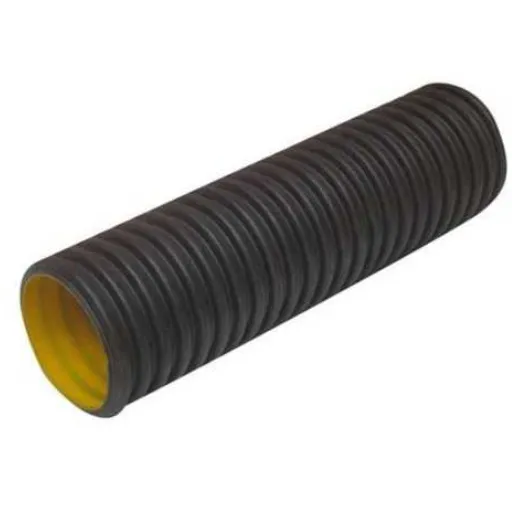
Demand and Supply Dynamics
The HDPE double-wall corrugated pipe market has been growing substantially due to its universal usage and the advantages said to have over conventional materials. Urbanization and infrastructure development have, thus, created a demand for cheap and durable piping solutions in sectors such as sewage systems, stormwater, and agricultural irrigation. These are some of the factors that have contributed to the soaring demand, and government programs focusing on sustainable infrastructure and replacing old materials with greener alternatives have all helped boost the demand.
On the supply side, manufacturers have been increasing operational capacity while investing in cutting-edge extrusion technologies to meet growing market demand. Processing of raw materials has undergone innovations like the use of improved high-density polyethylene resins to achieve higher production efficiency and superior product quality. Despite rising commodity price inflation and confiscation through logistical delay, global supply chains have remained somewhat resilient; hence, the major suppliers can answer any sudden surges in demand in crucial regions.
The industry shall see sustained growth due to adoption in emerging markets and imposition of stringent regulations favoring environmental compliance. This composite of demand acceleration, technology advances, and regulatory support highlights the great economic prospects for HDPE double-wall corrugated pipes.
Recent Innovations in Pipe Technology
The development of novel materials and processing techniques has, in recent years, given a considerable push to pipe technology. One of the big developments has been the use of these new-age composite materials that increase the mechanical strength and durability of pipes, with the result being that they are pretty much lighter. Polymer blends and nanomaterial additives like carbon nanotubes, for instance, have been developed to improve resistance against wear, corrosion, and environmental stress cracking.
The integration of smart sensors into pipe systems also created a revolution for monitoring and maintenance activities. Usually, these sensors are incorporated during manufacturing; the detectors look for changes in pressure, temperature, and flow rate. This data is then used to perform predictive maintenance that minimizes downtime and maximizes the operational life of the pipe systems.
Manufacturer extrusion technology improvements are introduced with a view to increasing production rates and ensuring wall thickness uniformities for enhanced structural integrity. On the other hand, improving joinery systems-a myriad of welding techniques combined with secure joint seals-has minimized the risk of leakage, even for high-pressure applications.
Such technological innovations have indeed focused on enhancing functionality requirements and the environmental and energy-efficiency considerations, further enabling the pipe industry in its quest for sustainability. Together, these developments therefore lay emphasis on the need for innovation to meet the requirements of demanding modern applications such as water resources management, infrastructure, and industrial fluids transport.
Impact of Market Trends on Pricing
Market trends bring fluctuations through the price mechanism within the pipe industry and other industries. Changes in the cost of raw materials, such as steel, PVC, and HDPE, directly translate into changes in the cost of production and so into market prices. Disruptions in the global supply chains, coupled with rising geopolitical tensions, further accentuate these shifts, creating price volatilities as a never-ending challenge.
However, the emerging trend to seek more sustainable and energy-efficient options has pushed advanced materials and technologies forward onto the safe path, and such a course typically involves heavy production costs paid for by the user. Investing in greener technologies and recyclable materials, however, points towards a market view of environmental responsibility, which might carve out price premiums at the very least, if not leading to cost benefits in the distant future.
Additionally, trends according to market analysis, as urbanization and infrastructure development, enhanced the demand for high-grade piping systems, capable of taking on various high-pressure applications. This demand growth compels suppliers to upgrade their production capacities, typically entailing heavy capital investments. Such overheads are always transferred down the value chain, exerting extra pressure on pricing models.
Examining these interrelated variables can thus give industry watchers the foresight they need for anticipating price changes and strategically positioning themselves for short-term turbulence and long-term market changes.
Factors Influencing HDPE Double Wall Corrugated Pipe Pricing
Raw Material Costs and Manufacturing Expenses
The prices of HDPE double-wall corrugated pipes largely depend upon the cost of the primary raw material, i.e., HDPE resin. HDPE resin prices depend on the global crude oil markets since they are manufactured from petroleum products. Variation in crude oil prices, owing to geopolitical tensions, disruptions in the supply chain, or fluctuating production levels, may lead to divergent HDPE costs.
Additionally, manufacturing costs, including energy consumption, labor wages, and upkeep of high-tech extrusion machinery, form an important portion of the cost build-up. Energy prices have a cascading effect on production overheads, especially in regions dependent upon fossil fuels. Labor costs are another factor that affects the price of the product; these costs vary from one place to another. Certainly, economies of scale can bring down unit manufacturing costs on the grounds of an output-based capacity in higher plants, yet usually, these need capital outlays beforehand.
The attention of all concerned in strengthening procurement patterns and prediction of market trends must be drawn to the interesting interplay between raw material price and manufacturing costs. Keeping tabs on the commodity markets and operational efficiencies can be critical to stay competitive in the highly competitive HDPE pipe production landscape.
Supply Chain Challenges
There are several major challenges to the supply chain of HDPE pipe that affect operational efficiency and market stability. The most pressing challenge is the uncertainty in the availability of raw materials, such as polyethylene resin, subject to demand fluctuations at the global level and production restrictions. With disruption in the supply of resin, long lead times can be created, thereby jeopardizing the manufacturing schedule.
On the other hand, transport bottlenecks usher in higher logistics costs and delay delivery schedules of raw materials and finished goods alike, wherein the causes may include port congestion, shortage of drivers, and regulatory requirements. Geopolitical restrictions and trade embargoes coming from time to time further put cross-border procurement processes into peril in terms of tariffs or interruptions to the supply.
The other challenge relates to the reliability of suppliers and the possible need for proper diversification. In situations of over-reliance on a certain set of suppliers, production becomes susceptible to abrupt market changes or issues peculiar to those suppliers. This becomes even more critical when world events like natural disasters and pandemics disrupt the supply chain midway.
To reduce risk through this, manufacturers make more use of the latest supply chain management technologies, such as predictive analytics and AI-supported demand forecasting. These technologies can monitor supply chain variables in real time while providing a strong advantage in making data-based decisions to keep operations running smoothly and cost-effectively.
Global Economic Changes and Their Impact
Throughout the world, a change in economic scenarios affects the industries, the markets, and the trade networks that require continuous changes in the strategies of organizations. Changes in factors such as the rate of growth of the economy, the inflation rate, and currency values affect production costs from the direct side and, from the indirect side, consumer purchasing power and international trade dynamics. For example, higher inflation usually increases the cost of raw materials, thereby reducing profit margins and forcing companies to either raise prices or try to purchase from somewhere else.
Furthermore, the interplay between shifting trade policies and economic sanctions has become increasingly pivotal in forming global markets. A trade restriction, such as a tariff or an export ban, may jeopardize the already established supply chain, forcing companies to pursue localization or diversification in their sourcing strategies to reduce dependency on unstable regions. In another way, import costs are directly affected when a currency in an emerging market is devalued, which in turn creates competitive advantages for industries that work with international suppliers.
The decline of the economic order and technological advances also sped up the trends of nearshoring and digital transformation. The organizations now use automation and data-driven insights to sustain their resilience to fast-track market turbulence. These strategies allow companies to minimize risks stemming from macroeconomic instability while enhancing operational efficiency in a highly globalized framework.
Regional Price Variations in the HDPE Pipe Market
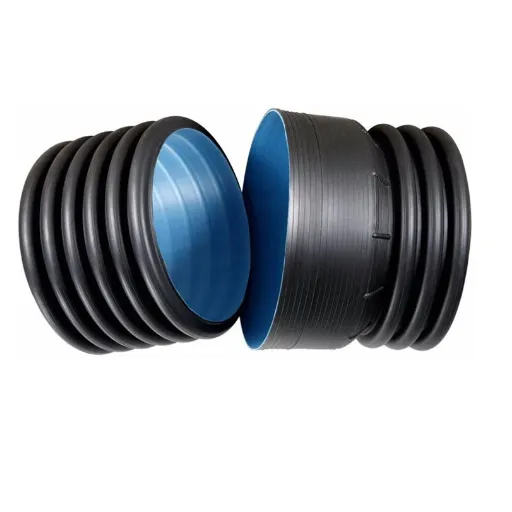
Regions with Highest and Lowest Price Points
Highest Price Regions
- North America – High labor costs, stringent regulations
- Western Europe – Advanced manufacturing processes, high transportation costs
Energy prices and strong infrastructure demand contribute to higher costs.
Lowest Price Regions
- Southeast Asia – Lower production costs, competitive labor
- Middle East – Oil-rich reserves, efficient supply chains
Abundant raw materials and favorable trade agreements maintain competitive pricing.
In a comprehensive study of the HDPE pipes market, I was able to observe great differences in price levels across different regions due to variations in production avenues and raw materials, and also from an economic point of view. North America and Western Europe are considered to be the most expensive regions for HDPE Pipes, with the cost continuing to soar due to stringent regulations, high costs of labor, and the highest cost of transportation in these two parts of the world. Energy prices rose sharply and, combined with the need to use advanced manufacturing processes, further contribute to the costs. Lastly, the strong demand for infrastructure and industrial projects, in turn, increases the price pressure.
Just the opposite, Southeast Asia and the Middle East register the lowest price levels for HDPE pipes. Some reasons behind this are lower production costs, ample access to raw materials (such as ethylene derived from crude oil or natural gas), and competitive labor. Countries of Southeast Asia, for instance, are now investing heavily in establishing manufacturing capability so they can produce good-quality pipes at much lower costs. Similarly, the Middle East, with its oil-rich reserves and efficient supply chain setup, enjoys an additional edge in price. Along with this, favorable trade agreements and government incentives further help maintain competitive price levels in these markets.
Gravitating towards local economic setup and market arrangements are these international differences in price. Hence, marketpersons in the HDPE pipe sector must be aware of this variation when deciding on their target areas, procurement policy planning, and supply-chain management. By aligning production, marketing, and supply activities with regional price policies, enterprises would achieve greater profitability and could be able to-guard themselves against abrupt changes in market prices.
Factors Affecting Regional Pricing
Raw Materials Availability and Costs: Undergoing a series of factors affecting regional pricing dynamics, it is of utmost importance to grasp these going into their tune to optimize one’s business strategies. Raw materials, availability, and costs stand as the foremost determinants, varying greatly from region to region due to resource accessibility and the presence of extraction infrastructure. For instance, regions suffering a scarcity of resin for high-density polyethylene often face higher import and transportation costs, thereby having direct implications on the final price setting of pipes.- 2
Labor Costs: Another factor that plays a significant role in the process is labor costs, forming in accordance with wage laws and the availability of the workforce in the locality. In general, a higher wage level in a country leads to a reduction in manufacturing within it and an increase in final prices for the consumer. Also, energy costs play a crucial role. Since the production of HDPE pipes is highly energy-intensive, variations in the costs of electricity and other fuels from one region to another can give rise to competitive advantages and disadvantages. - 3
Logistics and Transportation Infrastructure: Logistics and transportation infrastructure, with their own sets of gradations in importance, take an equal berth. Well-developed supply chain networks and proximity to demand centers lower distribution costs, while a less developed region, separated by greater distances, ends up with higher prices, as he or she has to come to terms with longer shipping distances and bigger logistical challenges. - 4
Market Demand and Competition: Finally, national demand and competition also influence pricing. Markets where demand is high but local competition is scarce will plant a little bit higher price points for land, whereas the same sort of markets will bring lower prices down since suppliers price them competitively according to the opposite market.
Future Projections for the HDPE Double Wall Corrugated Pipe Market
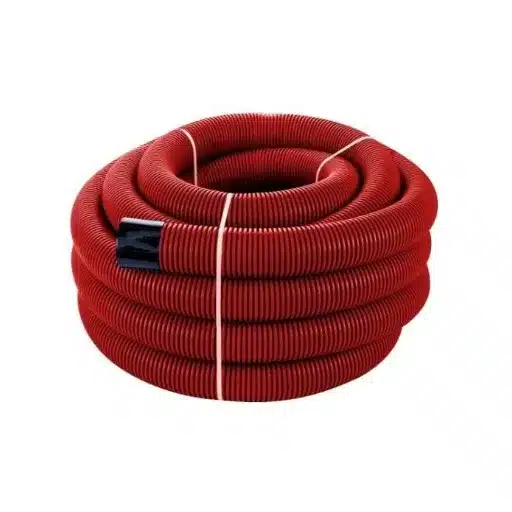
Anticipated Growth and Emerging Markets
Over the decade to come, the global HDPE double-wall corrugated pipe market shall most likely enjoy strong growth, as huge investments are being made in infrastructure and urban development worldwide. With the increase in population in emerging economies, the demand is increasing for modern drainage and wastewater management solutions that meet this demand by means of their life span, flexibility, and cost efficiency.
Market growth is considered fastest in Asia-Pacific and Latin America, owing to rapid urbanization and government infrastructure initiatives. India and other Asian countries, including China, are allocating large sums toward sanitation systems and promoting higher usage of HDPE double-wall corrugated pipes for larger-scale civil construction works. Further on, the continuous improvements taking place in polymer technology as well as in the manufacturing processes bring about reductions in production cost, thereby giving a lift to market growth.
Such pipes are also used by the agricultural or energy sectors for irrigation systems and for cable protection systems, respectively. Manufacturers would be able to see strong opportunities arising due to this wide array of usages. Redemption of several challenges like fluctuating raw material prices and environmental regulations is demanded from suppliers to witness sustained growth across various markets.
Potential Challenges Facing the Industry
Price Fluctuations
Price fluctuations constitute a formidable challenge, chiefly for raw materials such as polyethylene and PVC that have recently been subjected to disruptions in the supply chain at the global level, as well as due to geopolitical tensions.
Environmental Regulations
More vigorous regulations are now in place with respect to plastics considered harmful to the environment, keeping carbon emissions down. Compliance consequently entails heavy investments in sustainable manufacturing technologies.
Intensified Competition
Competition intensified further in many regions, where the market has reached a stage of saturation, forcing companies to innovate and differentiate their offerings to hold their share in the market.
Technology Adoption
With the rapid tempo of changes in technology, companies find themselves adopting new production means just to stay competitive: automation and smart piping solutions.
Cybersecurity Risks
As manufacturing processes keep increasing their digitization, cybersecurity risks continue to grow in importance. An attack can disrupt operations; take away intellectual property; or erode the trust of customers.
Strategic Positioning: These challenges require the strategic positioning of cost optimization, sustainability, and adaptability to the constantly evolving market. Overcoming these challenges will serve as the very determining factor for, on one hand, firm resilience and on the other hand, long-term sustenance in this volatile environment.
Long-term Market Outlook
Long-range market forecasts gently oscillate between the optimistic and cautionary based on promises of automation, artificial intelligence, and sustainable practices. Industry forecasts state that worldwide demand for streamlined processes and digital transformation is anticipated to steadily grow through the coming decade. Areas of growth arise in smart manufacturing solutions, predictive maintenance systems, and energy-efficient technologies as a larger commitment toward operational efficiency while minimizing environmental impact.
Emerging economies are likely to provide a substantial contribution to the overall expansion of the sector, while industrial activities and infrastructure development in emerging economies will support the demand. Developed economies will continue the push for retrofitting of their existing infrastructure by means of state-of-the-art technology so that productivity and stringent environmental regulations can be complied with.
Nevertheless, the course of growth is fraught with potential challenges. Supply chain disruptions, skilled labor shortages, and regulatory complexities could present some bottlenecks. Hence, the organizations should develop their human resource capacity, foster innovation, and devise risk mitigation strategies in view of unusually volatile global economic circumstances. In addition, identifying strategic partnership opportunities and evolving regional diversification strategies encourage greater resilience and sustain growth.
Consequently, technology-led enhancements in combination with policy frameworks fostering innovation will change the competitive landscape, providing opportunities and risks for stakeholders maneuvering this changing market.
Frequently Asked Questions (FAQ)
Q: What is the current market price of HDPE double-wall corrugated pipes?
A: The pricing of HDPE double-wall corrugated pipes changes according to demand, production costs, and the supplier’s internal pricing strategy. Generally, prices will be shown in the price list according to the dimension and specification of the pipes, including the ring stiffness and the material quality.
Q: What factors influence the price of HDPE drainage pipes?
A: The price of HDPE drainage pipes is influenced by prices of raw materials, the size of the pipe market, production processes, and the ring stiffness of the pipe. The demand for HDPE pipes in the market and outside pressure brought by competitors can also influence the price.
Q: How does the production process determine the price of HDPE pipes?
A: As a result of the production process of HDPE pipes, including raw material quality and the method of production, impacts price is impacted. If cheaper production methods are utilized, the price would be lowered; however, better quality assurance would mean a higher price since it offers better performance features, such as high-pressure resistance and long life.
Q: What is the importance of ring stiffness in HDPE double-wall corrugated pipes?
A: Ring stiffness is one of the very important parameters determining the structural integrity of HDPE double-wall corrugated pipes and is the ability of the pipe to withstand external pressures and loads prevailing on it, thereby being important in civil applications for municipal sewer systems and underground drainage.
Q: Are HDPE pipes comprised of various kinds?
A: The market has several types of HDPE pipes available; these include single-wall and double-wall corrugated pipes. This classification is guided by specifications like ring stiffness, diameter, and usage, which are design considerations for diverse irrigation, drainage, and sewage applications.
Q: What CAGR is expected for the HDPE pipe market?
A: The HDPE pipe market is expected to sustain a significant CAGR based on investments being directed toward water management and infrastructure projects with implications. This translates into high demand for rugged drainage solutions resistant to corrosion across industries.
Q: How does HDPE pipe demand affect their market share?
A: Demand is a major factor affecting the market share of HDPE pipes. As industries realize the value of high-density polyethylene for irrigation, drainage, and utility applications, manufacturers may increase production to satisfy demands, thereby affecting market dynamics.
Q: What are the benefits of HDPE double-wall corrugated pipes in drainage systems?
A: HDPE double-wall corrugated pipe benefits include resistance to high pressure, corrosion-resistant nature, etc. The corrugations provide for strength while maintaining low weight, thus making these pipes very good for municipal and agricultural drainage.
Q: Can the price of HDPE pipes fluctuate with changes in oil prices?
A: As HDPE is a product originating from a petroleum feedstock, the raw material price varies with changes in oil prices. With an increase in oil prices, production costs would go up, which eventually translates to the selling prices of pipes.
Q: What is the total cost of ownership of HDPE double-wall corrugated pipes?
A: The total cost of ownership of double-wall corrugated pipes, being HDPE, is the initial purchase price, installation costs, and long-term maintenance costs. Because of their long service life and low maintenance needs, HDPE pipes generally have a favorable total cost of ownership compared with other materials.
References
- Cost analysis of pipes useful in sewer construction
Read the article here on Academia.edu.
This source covers the pricing and applications of double-wall corrugated HDPE pipes in the Malaysian market. - Advanced Drainage Systems Report
View PDF from Babson College.
This document gives information concerning the characteristics and market data on double-wall corrugated pipelines. - Plastic Pipe for Highway Construction Phase 2
Access the report from Auburn University.
This report gives case studies and cost analyses of HDPE pipes used in highway construction. - Factors Affecting Culvert Pipe Selection
Download the research report from the University of Minnesota.
This research deals with the use of and problems faced by dual-walled HDPE pipes in various applications.
This comprehensive analysis provides stakeholders with essential insights into HDPE double wall corrugated pipe pricing dynamics, market trends, and future projections to make informed business decisions.



